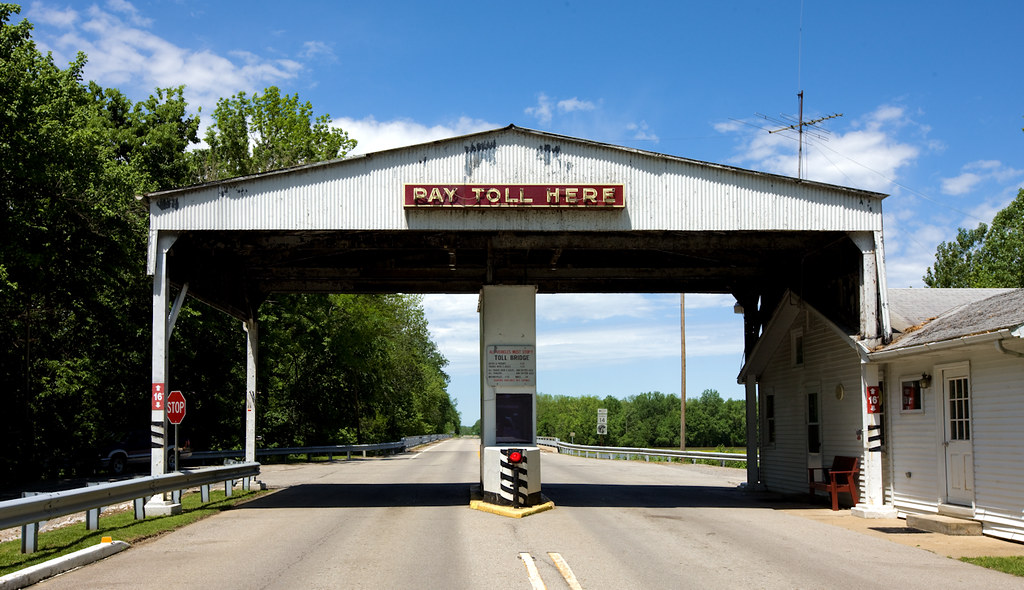21st Century Digital #24 |

Toll booth at the entrance of Historic New Harmony, Indiana. 2009. May 9.
New Harmony is a historic town on the Wabash River in Harmony Township, Posey County, Indiana, United States. It lies 15 miles (24 km) north of Mount Vernon, the county seat. The population was 789 at the 2010 census. It is part of the Evansville metropolitan area.
Established by the Harmony Society in 1814, the town was originally known as Harmony (also called Harmonie, or New Harmony). Bought at two dollars an acre, the 20,000-acre (8,100 ha) settlement was the brainchild of George Rapp and was home exclusively to German Lutherans in its early years. Here, the Harmonists built a new town in the wilderness, but in 1824 they decided to sell their property and return to Pennsylvania. Robert Owen, a Welsh industrialist and social reformer, purchased the town in 1825 with the intention of creating a new utopian community and renamed it New Harmony. While the Owenite social experiment was an economic failure just two years after it began, the community made some important contributions to American society.
New Harmony became known as a center for advances in education and scientific research. New Harmony’s residents established the first free library, a civic drama club, and a public school system open to men and women. Its prominent citizens included Owen’s sons, Indiana congressman and social reformer Robert Dale Owen, who sponsored legislation to create the Smithsonian Institution; David Dale Owen, a noted state and federal geologist; William Owen; and Richard Owen, state geologist, Indiana University professor, and first president of Purdue University. The town served as the second headquarters of the U.S. Geological Survey and numerous scientists and educators contributed to New Harmony’s intellectual community, including William Maclure, Marie Louise Duclos Fretageot, Thomas Say, Charles-Alexandre Lesueur, Joseph Neef, Frances Wright, and others. (Wikipedia)
Photograph retrieved from the Library of Congress, www.loc.gov/pictures/item/2010630184/. (Accessed March 05, 2017.)
Credit line: Carol M. Highsmith’s America, Library of Congress, Prints and Photographs Division.
Photograph: Carol M. Highsmith
Medium: 1 photograph : digital, TIFF file, color.
Highsmith, a distinguished and richly published American photographer, has donated her work to the Library of Congress since 1992. Starting in 2002, Highsmith provided scans or photographs she shot digitally with new donations to allow rapid online access throughout the world. Her generosity in dedicating the rights to the American people for copyright free access also makes this Archive a very special visual resource.
Note – This image has been digitally adjusted for one or more of the following:
– fade correction,
– color, contrast, and/or saturation enhancement
– selected spot and/or scratch removal
– cropped for composition and/or to accentuate subject matter
– straighten image

